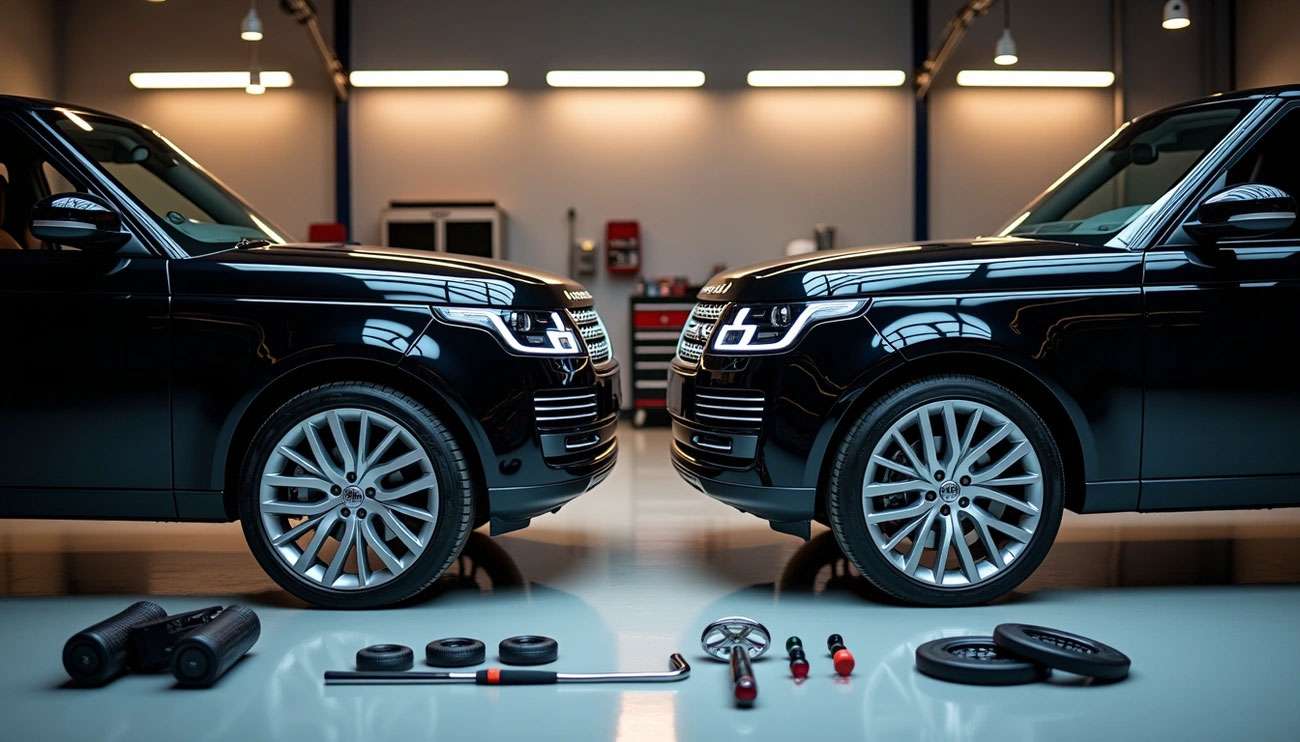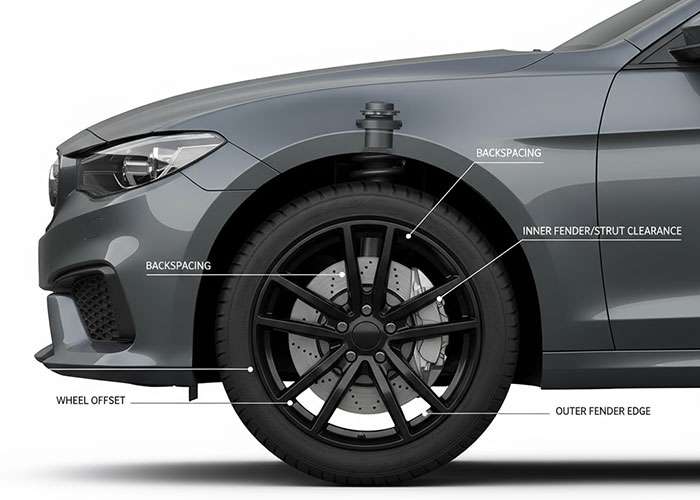Upgrade from 20-Inch to 22-Inch Rims: Beginner’s Guide

Thinking about stepping up from 20s to 22s? This guide walks you through what actually changes—ride, handling, tire choices, and costs—then shows you how to upgrade correctly. You’ll get fitment tips from our shop floor so you avoid rub, protect your suspension, and keep TPMS and safety systems happy.
Quick answer: 22-inch wheels deliver a bolder look but add weight and reduce sidewall height. Plan on lower ride comfort, possible acceleration/braking penalties, and higher tire costs. It’s safe and reliable when you match overall diameter, verify offset/backspacing, confirm load index, and complete a proper torque + alignment.
Are 22s right for your vehicle?
- Clearance first: Check inner fender, liner, pinch weld, brake lines, and upper control arm at full lock and full compression.
- Overall diameter: Keep tire overall diameter close to stock to protect gearing, speedometer, and ABS/TC logic. Use our Plus/Minus Sizing Calculator.
- Load & speed ratings: New tires must meet or exceed OE load index and speed rating.
- Wheel weight: Heavier 22s can soften acceleration and lengthen braking; consider lighter flow-formed or forged options.
- TPMS & hardware: Plan on TPMS transfer or new sensors, correct shank/seat lug style, and hub-centric fitment (rings if needed).
What changes when you go from 20″ to 22″
Ride & noise
Taller sidewalls on 20-inch packages absorb impacts; 22s use lower-profile tires that ride firmer and transmit more road texture.
Handling & braking
Sidewall stiffness can sharpen steering response, but added rotating mass may offset gains. Expect slightly longer stops unless wheel/tire weight is managed.
Acceleration & fuel economy
More mass and a larger moment of inertia typically reduce launch feel and can impact efficiency. Choosing lighter construction helps.
Looks & clearance
Visually, 22s fill the arches and showcase brake hardware. Ensure backspacing and offset keep the tire centered to avoid rub on liners or suspension.
Tires & sidewall protection
Lower-profile tires reduce curb and pothole protection. Consider reinforced sidewall options and keep pressures on-spec.
Cost overview
Budget for four wheels, new 22-inch tires, TPMS parts, mount/balance, alignment, and possible calibration services. Packages can simplify pricing—start with our Wheel & Tire Packages.
Step-by-step: how to upgrade correctly
- Measure your space. With current wheels on, measure inner/outer clearance at straight-ahead and at full lock. Note brake caliper profile and hub bore.
- Pick a tire that preserves diameter. Use the Plus/Minus Sizing Calculator to keep overall diameter near OE (usually within ±3%).
- Select exact wheel specs. Confirm bolt pattern (PCD), center bore, and choose offset/backspacing that maintains inner clearance while avoiding poke. If needed, test in our Wheel Visualizer.
- Verify load index & speed rating. Choose tires that meet or exceed OE ratings—critical for safety and warranty.
- Plan TPMS & hardware. Transfer or replace sensors; choose the correct lug seat (conical/ball/mag). Add hub-centric rings if the wheel bore is larger than the vehicle hub.
- Professional mount & balance. Request a road-force balance and inspect for runout. Install new valve stems or service kits.
- Test-fit and check clearance. Before final torque, cycle steering lock-to-lock and compress suspension (loaded) to confirm no contact.
- Torque & relearn. Torque lugs to manufacturer spec in a star pattern; perform TPMS relearn. Re-torque after 50–100 miles.
- Alignment. Get a post-install alignment; verify camber/toe to prevent edge wear on low-profile tires.

Shop-floor tips (from our fitment team)
- Match hub first: Hub-centric assemblies reduce vibration; use quality rings if required.
- Avoid generic spacers: Only use hub-centric spacers with proper extended studs when absolutely necessary.
- Protect sensors: Tell the installer if you have aluminum TPMS valves—use compatible torque and service kits.
- Mind brake upgrades: Big-brake kits may need spoke clearance templates—ask us before ordering.
After the upgrade: performance & maintenance
Expect a firmer ride and potentially more road noise. Stay on top of pressures (check monthly), rotate on schedule, and watch for curb rash. If you notice tramlining or edge wear, book an alignment check.
Get it right with our tools & packages
Start with Search by Vehicle, preview the look in our Wheel Visualizer, or choose a ready-to-mount Wheel & Tire Package shipped balanced to your door. Prefer to spread payments? See Financing.
FAQs: Upgrading from 20″ to 22″ Wheels
Will 22-inch wheels hurt ride quality?
Yes. Lower-profile tires on 22s have less sidewall to absorb impacts, so the ride will feel firmer and you may notice more road noise. Keeping tire pressures on-spec and doing a fresh alignment helps.
Do I need to recalibrate my speedometer when going from 20″ to 22″?
If your new tire size keeps overall diameter close to stock, readings stay accurate. If you change diameter significantly, calibration may be needed—use our Plus/Minus Sizing Calculator to pick the right size.
How do I prevent rubbing with 22s?
Match overall diameter, then choose wheel offset/backspacing that keeps proper inner and outer clearance. Check at full lock and under compression. Our guides on offset and backspacing show exactly how to verify fitment.
Are spacers safe for this upgrade?
Use hub-centric spacers only when necessary and with proper extended studs or hardware. The best solution is selecting the correct wheel offset so you don’t need spacers at all.
Do my new 22-inch tires have to match the original load index?
Yes—match or exceed the vehicle’s OE load index and speed rating. This protects safety systems and tire warranty, especially important with lower-profile sizes.
What torque should I use on the lug nuts or bolts?
Torque to the vehicle manufacturer’s spec using a calibrated torque wrench in a star pattern. Re-torque after 50–100 miles to ensure the hardware has fully seated.
Do I need an alignment after installing 22s?
Yes. A post-install alignment resets camber and toe for the new tire profile and helps prevent edge wear and tramlining.
Can I buy 22-inch wheel & tire packages pre-mounted and balanced?

